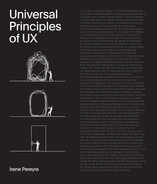52
Design cannot be fully objective.
In 1972, in the annex of the Stedelijk Museum in Amsterdam, Dutch graphic designers Wim Crouwel and Jan van Toorn debated whether objectivity or subjectivity works better in design. Crouwel argued in favor of the graphic designer as the rational and objective service provider, and van Toorn argued that such objectivity is not only impossible but a disservice to society, as personal expression communicates much more powerfully.
While graphic design has since moved on from this debate, with both rational and personal expression holding credence, the debate still remains in the UX design field fifty years later. Objectivity is often considered to be ideal for UX design. Research methods (usability testing, ethnographic studies, card-sorting exercises, and more) are meant to result in an empirical and objective design in which the designer’s personal preferences have been replaced by agreed-upon evidence. It’s science.
Except it’s not. Most companies selling design research are selling a pseudo-scientific con.
I have seen highly suspect conclusions from research studies where leading questions were asked to a ridiculously small number of people. I have also seen designers test the usability of their own products in such a way that the results always skew positive (see Principle 97). All this research is extremely expensive, takes a lot of time, and is often given greater importance than intuition and experience-based design decisions.
I’m not saying don’t do research—we do research in our studio. But let’s not pretend that the research is in any way scientific, or that it results in objective design. Research can help inform the design and remove some of your own bias, but it does not offer absolute truths (see Principle 53). The person who guides the research and interprets the results is still human and therefore unable to fully remove their own bias.
The emphasis on objectivity narrows our perspective and makes us less free, less open-minded, less creative, and less human in our thinking. I agree with van Toorn. Let’s welcome the diversity of different personal and idiosyncratic perspectives. Listening to our intuition, acknowledging our past experiences, and bringing the totality of our human experience to the table is our greatest advantage as designers.

